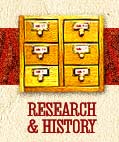reply for Fidel at https://forum.eastgate.com/t/tinderbox-meetup-sunday-may-7-2023-video-connect-with-sonke-ahrens-live-the-author-of-how-to-take-smart-notes/6659
@fidel (I'm presuming you're the same one from the meetup on Sunday, if not perhaps someone might tag the appropriate person?), I was thinking a bit more on your question of using physical index cards for writing fiction. You might find the examples of both Vladimir Nabokov and Dustin Lance Black, a screenwriter, useful as they both use index card-based workflows.
Vladimir Nabokov died in 1977 leaving an unfinished manuscript in note card form for the novel The Original of Laura . Penguin later published the incomplete novel with in 2012 with the subtitle A Novel in Fragments . Unlike most manuscripts written or typewritten on larger paper, this one came in the form of 138 index cards. Penguin's published version recreated these cards in full-color reproductions including the smudges, scribbles, scrawlings, strikeouts, and annotations in English, French, and Russian. Perforated, one could tear the cards out of the book and reorganize in any way they saw fit or even potentially add their own cards to finish the novel that Nabokov couldn't. Taking a look at this might give you some ideas of how Nabokov worked and how you might adapt the style for yourself. Another interesting resource is this article with some photos/links about his method with respect to writing Lolita: https://www.openculture.com/2014/02/the-notecards-on-which-vladimir-nabokov-wrote-lolita.html
You might also find some useful tidbits on his writing process (Bristol cards/Exacompta anyone?) in:
Gold, Herbert. “Vladimir Nabokov, The Art of Fiction No. 40.” The Paris Review, 1967. https://www.theparisreview.org/interviews/4310/the-art-of-fiction-no-40-vladimir-nabokov.
Carl Mydans photographed Nabokov while writing in September 1958 and some of those may be interesting to you as well.
Dustin Lance Black outlines his index card process in this video on YouTube: https://www.youtube.com/watch?v=vrvawtrRxsw
If you dig around you'll also find Michael Ende and a variety of other German fiction writers who used index cards on the Zettelkasten page on Wikipedia, but I suspect most of the material on their processes are written in German.
Index cards for fiction writing may allow some writers some useful affordances/benefits. By using small atomic pieces on note cards, one can be far more focused on the idea and words immediately at hand. It's also far easier in a creative and editorial process to move pieces around experimentally.
Similarly, when facing Hemmingway's "White Bull", the size and space of an index card is fall smaller. This may have the effect that Twitter's short status updates have for writers who aren't faced with the seemingly insurmountable burden of writing a long blog post or essay in other software. They can write 280 characters and stop. Of if they feel motivated, they can continue on by adding to the prior parts of a growing thread.
However, if you can, try to use a card catalog drawer with a rod so that you don't spill all of your well-ordered cards the way the character in Robert M. Pirsig's novel Lila (1991) did.











